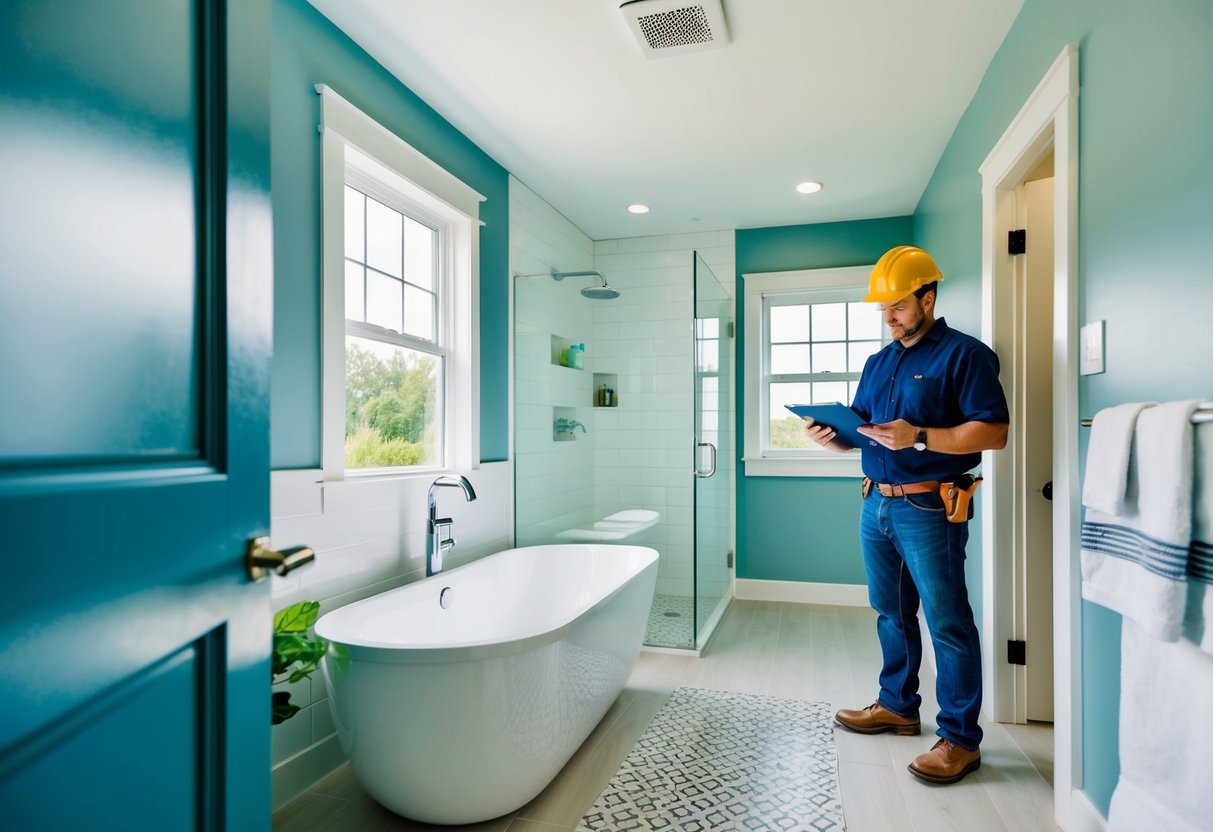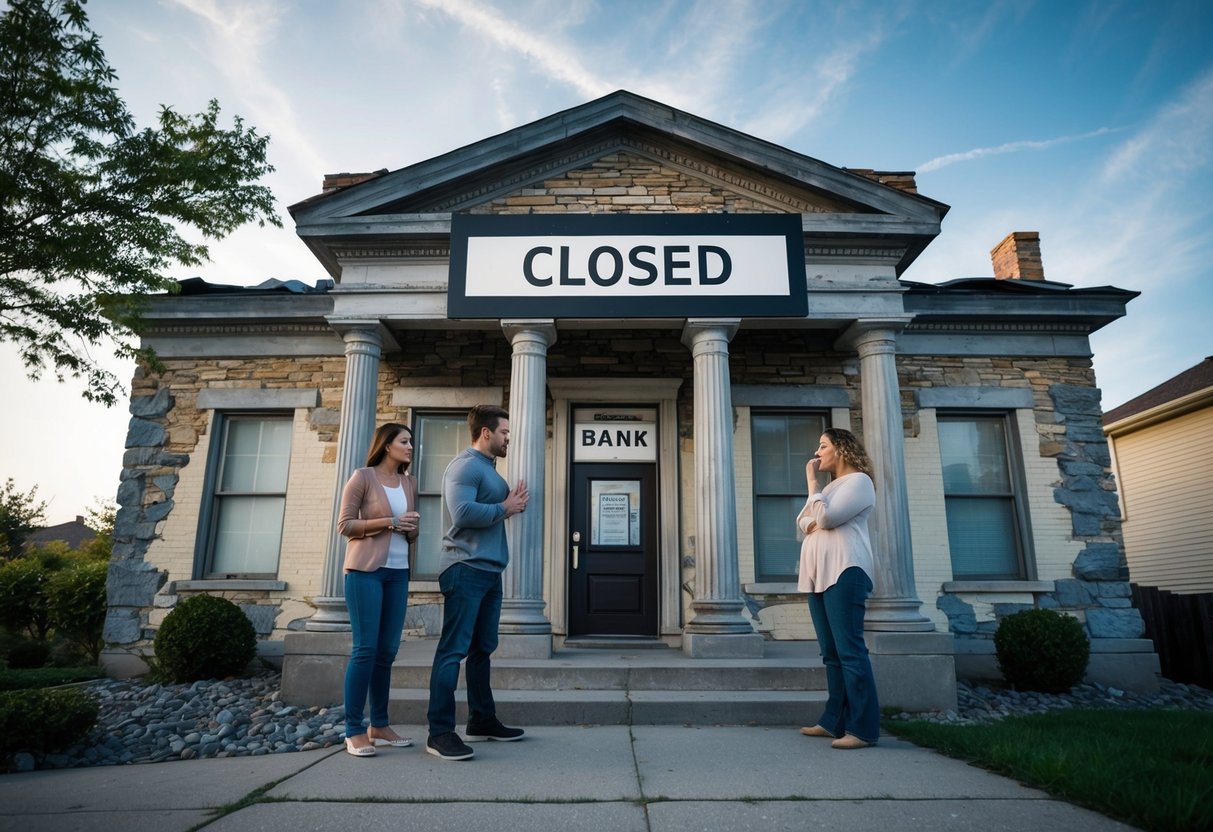Thinking about renovating your house can be exciting but also overwhelming. Many factors influence house renovation costs in Australia, ranging from the size of the project to the quality of materials used. Minor renovations can start as low as $20,000, while full house renovations can exceed $300,000.

When planning your renovation, it’s important to consider the costs for different rooms and spaces. Kitchens and bathrooms, for example, tend to be more expensive, with kitchen renovations costing between $20,000 to $60,000 and bathrooms ranging from $10,000 to $35,000. Labour usually takes up the largest portion of your budget, followed by materials.
Before diving into your project, it’s essential to create a detailed plan and set a realistic budget. Use tools like renovation calculators and get quotes from multiple contractors to ensure you’re getting the best value for your money. Careful planning and budgeting will help you avoid unexpected expenses and ensure a smoother renovation process.
Key Takeaways
- Renovation costs in Australia vary widely.
- Focus on careful budgeting and planning.
- Use renovation calculators and get multiple quotes.
Understanding Renovation Costs

Understanding the costs involved in house renovations is essential for planning and budgeting. Several factors influence these costs, including the size of the project and the location.
Renovation Cost Overview
Renovation costs can vary widely based on the scope and complexity of your project. Smaller renovations might cost as little as $20,000, while a full house renovation could exceed $300,000. Common areas for high expenses include labour and materials. Using a renovation calculator or gaining contractor quotes can help you get a more accurate estimate for your project.
For example:
- Minor renovations: From $20,000 to $50,000
- Mid-range renovations: From $50,000 to $150,000
- Major renovations: Over $150,000
Always ensure to plan for unexpected costs that might arise during the renovation process.
Impact of Size on Costs
The size of your renovation project significantly impacts the total cost. Larger projects naturally require more materials and labour, leading to higher expenses. For example, renovating a single room might cost between $10,000 and $35,000, while an entire house renovation ranges from $40,000 to $300,000.
- Small projects: Less than 100 square metres may cost $1,000 to $3,000 per square metre
- Medium projects: 100 to 200 square metres, costs can be $2,000 to $4,000 per square metre
- Large projects: Over 200 square metres, expect costs of $3,000 to $5,000 per square metre
Accurately measuring your renovation space helps in estimating costs more precisely.
The Role of Location
Location plays a crucial role in determining renovation costs. Different regions in Australia have varying labour and material costs. For instance, renovating in Victoria might be pricier compared to Western Australia.
- Victoria: Average full house renovation cost around $71,000
- Western Australia: Average cost about $54,377
Urban areas typically have higher costs due to increased demand for skilled labour and materials. Regional areas might offer lower costs but could also face limitations in available services and materials, potentially increasing costs in other ways.
To conclude, understanding the factors affecting renovation costs, such as project size and location, helps in planning a realistic budget and avoiding unexpected financial stress.
Setting Your Budget

When planning a house renovation, it’s crucial to set a clear and realistic budget. This section explores how to create an accurate budget, offers practical tips to stick to your budget, and highlights hidden costs you should consider.
Creating a Realistic Budget
Start by defining the scope of your renovation. List all the changes you want to make and prioritize them. Research costs by checking online, asking friends, and getting quotes from contractors.
Use cost estimates to get a general idea. For example, minor updates might cost around $20,000, while full-scale renovations can exceed $300,000. Labour and materials are significant expenses, so be detailed in your planning.
Renovation Budget Tips
It’s wise to get multiple quotes from different contractors. This helps you find a fair price and understand market rates. Fixed-price quotes can prevent cost overruns and make your budgeting more effective.
Include a contingency fund of 10-20%. Renovations often have unexpected costs, and this buffer ensures you are prepared. Detailed contracts and fixed prices can also save money by reducing unforeseen expenses.
Hidden Costs to Consider
Be aware of hidden costs that can surprise you. These include permits, inspections, and potential repair work that wasn’t initially visible. For older homes, structural issues can add to the cost.
Another hidden cost is living arrangements if your renovation makes your home uninhabitable. You might need to rent a place temporarily, which should be factored into your budget. Always schedule and plan for these extra expenses to avoid budgetary surprises.
Renovation Planning and Logistics

Careful planning, secured permits, and obtaining multiple quotes are vital to ensuring a smooth renovation process. Doing thorough research and being organised from the start can save you time, money, and stress later on.
Initial Research and Planning
Begin by identifying what you want to achieve with the renovation. Clearly define your goals and establish a budget range. Use resources such as spreadsheets or budget trackers to keep track of costs and plan out each stage.
Engage professionals like architects or designers to draft plans. This can cost between $2,000 and $8,000 depending on the project’s complexity. Be meticulous with planning to avoid unexpected expenses.
Research is crucial. Gather information on materials, labour costs, and timelines to form a realistic plan. Use online renovation calculators to get cost estimates. Thorough planning helps in making informed decisions and avoiding costly mistakes.
Obtaining Multiple Quotes
Obtaining multiple quotes is essential for a cost-effective renovation. Speak to different contractors and suppliers to understand the market rates for labour and materials. Comparing quotes helps to ensure you are getting fair pricing.
Request detailed quotes that break down costs for labour, materials, and potential additional fees. This transparency allows you to compare accurately. Aim to get at least three quotes to have a good comparison base.
Don’t just look at the price. Evaluate the contractor’s experience, reputation, and previous work quality. Sometimes, a slightly higher quote might be justified by better craftsmanship or reliability.
Securing Permits and Approvals
For most renovation projects, especially major ones, securing the necessary permits and approvals is critical. Each local council might have different requirements, so check early on what is needed.
You may need permits for structural changes, electrical work, or plumbing installs. Failure to get proper permits can result in fines and delays. Plan and budget for permit fees, which can vary widely.
Hire professionals familiar with local regulations to assist in obtaining permits. This ensures all paperwork is correctly filled out and submitted. Early action on securing permits helps avoid project holdups and keeps your renovation on track.
Choosing the Right Professionals

Choosing the right professionals for your house renovation is crucial for a successful project. You’ll need contractors, architects, and tradespeople who are competent and reliable. Below, we break down the key aspects of working with these professionals.
Working with Contractors
Contractors play a central role in home renovations. They manage the workflow, coordinate with various tradespeople, and ensure that the project stays on schedule.
When selecting a contractor, check their references and past work. Ask for quotes from multiple contractors to compare prices and services. Always ensure your contractor is licensed and insured.
Good communication is vital. Make sure your contractor understands your vision and is transparent about costs and timelines. A clear contract should outline the scope of work, payment schedule, and any warranties.
Engaging Architects and Designers
Architects and designers can transform your ideas into detailed plans. They help you maximise space and functionality, ensuring that the end result meets your expectations.
Choose an architect or designer who has experience with your type of project. Review their portfolio and speak directly with their previous clients. Be clear about your budget and needs from the outset.
Discuss all details, including materials, finishes, and design options. Their ability to provide detailed drawings and manage the planning permits is crucial. Good collaboration between your architect, designer, and contractor will keep the project running smoothly.
Selecting Tradespeople
Tradespeople, including electricians, plumbers, and carpenters, are the hands-on workers who bring your renovation plans to life. Each of these roles requires specific skills and certifications.
When hiring tradespeople, it’s wise to get recommendations from your contractor or architect. Verify their qualifications and experience. Always ask for a detailed quote and timeline for their work.
Effective coordination among tradespeople is essential. Clear communication about who is responsible for what aspect of the renovation helps prevent delays and misunderstandings. Consistent oversight ensures that all work meets high standards and complies with building regulations.
Design and Structural Renovation

Undertaking design and structural renovation can transform your home significantly. It’s essential to plan carefully, considering elements like structural changes, interior design principles, and upgrades to electrical and plumbing systems.
Considering Structural Changes
Structural changes are often the most significant part of a renovation. Walls might need to be moved, removed, or built. This can affect the overall layout and design of your home. Hiring a structural engineer can be crucial, as they assess the integrity of existing structures.
Structural changes can be complex, requiring permits and inspections. It’s important to check with local authorities for regulations. Additionally, the cost can vary greatly based on the extent of the changes. Simple wall removals might cost a few thousand dollars, while major alterations can go up to tens of thousands.
Designing with Interior Design Principles
Interior design is not just about decor. It involves creating functional spaces that also look good. When renovating, think about the flow of the space and how different rooms connect. This can enhance both the functionality and aesthetic appeal of your home.
Utilising principles of colour theory, balance, and proportion is key. Furniture placement and lighting also play critical roles. Hiring an interior designer can be beneficial, as they bring expertise in creating harmonious spaces.
Selecting colours, materials, and finishes is important as well. Neutral tones can create a timeless feel, while adding pops of colour can inject personality into the space.
Electrical and Plumbing Considerations
Upgrading electrical and plumbing systems is often necessary during renovations. This might involve rewiring for better safety and efficiency or relocating plumbing fixtures. It’s important to ensure that these systems are up to code and capable of handling modern requirements.
Consulting with a qualified electrician and plumber ensures that the installations are safe and efficient. Electrical upgrades could include adding more outlets, improving lighting, and updating the circuit panel.
For plumbing, consider the placement of new fixtures and possible rerouting of pipes. Modern fixtures can improve water efficiency and add value to your home. Both electrical and plumbing upgrades can be costly, so it’s essential to budget for these changes in your renovation plan.
Specific Room Renovation Costs

Understanding the costs of renovating different rooms in your house can help you budget more effectively and make informed decisions. Each room has unique requirements and costs associated with renovations.
Kitchen Renovation Details
Renovating a kitchen can be one of the more expensive projects in your home. For kitchens over 10 square metres, the average cost is around $22,600. Smaller kitchens, less than 10 square metres, generally cost around $14,600. Major expenses come from new cabinetry, countertops, and appliances.
Splurge items might include high-end appliances or custom cabinetry. Lighting and flooring can also affect your budget significantly. Make sure to allocate funds for these critical elements. Labour costs can be a significant part of your budget, especially for plumbing and electrical work which require licensed professionals.
Bathroom Renovation Aspects
Bathroom renovations can vary widely in cost depending on the size and scope. A mid-range bathroom renovation costs around $10,000, while high-end remodels can go up to $30,000 or more. Key elements driving costs are fixtures, plumbing, and tiling, with premium tiles and fittings increasing the price.
Waterproofing is essential and must be done to Australian standards. This adds to the labour cost but is crucial for the longevity of your bathroom. Vanities, showers, and bathtubs are significant line items as well, with high-quality fixtures costing more. Don’t forget about lighting and ventilation, both of which are important in a bathroom setting.
Bedroom Renovation Insights
Renovating a bedroom can be more affordable compared to kitchens and bathrooms. The cost ranges from $2,000 to $35,000 depending on the extent of the work. Basic updates like painting and flooring are on the lower end of the scale.
For more extensive renovations, you might consider built-in wardrobes, electrical rewires, or adding an ensuite bathroom, which pushes costs higher. Lighting and insulation are other important aspects, particularly if you’re updating an older home. High-quality finishes and custom features will also drive up costs, so plan accordingly.
Living Room Refresh Costs
Living room renovations typically cost between $10,000 and $15,000. Changes often include flooring, lighting, and layout adjustments. One of the more frequent updates is installing new flooring, such as hardwood or high-quality carpeting.
Storage solutions like built-in shelves or entertainment units can add to the costs but significantly improve functionality. Another important aspect is lighting, including the type and placement of lights, which can have a major impact on the room’s ambiance. Updating the décor with new paint or wallpaper and furnishing can also change the feel of this highly visible space.
Finishing Touches and Décor

Enhancing your home with the right fittings, fixtures, and finishes not only boosts its appearance but also adds significant value. Attention to detail in flooring, walls, and lighting ensures a polished, stylish look.
Selecting Fittings and Fixtures
Choosing the right fittings and fixtures is essential for a cohesive look. Opt for high-quality items that match your home’s style.
For bathrooms, consider sleek taps, modern showerheads, and stylish towel racks. Look for durable materials like stainless steel or brass.
In kitchens, select fixtures that are not only stylish but also functional. Choose handles, faucets, and sinks that complement your cabinetry and countertops. Soft-close mechanisms for drawers add a touch of luxury.
Flooring and Wall Finishes
Flooring and wall finishes significantly impact the overall feel of your home.
Flooring options range from hardwood to tiles and carpets. Hardwood floors are durable and timeless, while tiles are ideal for wet areas like bathrooms and kitchens.
For walls, paint is a versatile option, but consider feature walls or wallpapers for added texture and colour. Quality paint ensures longevity and a premium finish.
In high-traffic areas, durable finishes are crucial. Use semi-gloss or satin paints for walls in these spaces for easy cleaning and maintenance.
Lighting and Accessories
Lighting and accessories play a critical role in setting the mood and enhancing functionality.
Lighting involves ambient, task, and accent lighting. Use pendant lights or chandeliers for ambient lighting in living spaces. Task lighting, such as under-cabinet lights in kitchens, improves practicality.
Accessories like rugs, cushions, and decorative pieces personalise your space. Choose items that reflect your style and complement the existing decor.
Smart fixtures and LED options offer energy efficiency and can be controlled for different ambiances.
Ensuring each piece aligns with the overall style and purpose of the room enhances both aesthetically and functionally.
Landscaping and External Work

When planning your home renovation, it’s essential to also think about landscaping and external work as they significantly impact your property’s value and appearance. This includes upgrading the exterior of your house and improving your garden and outdoor areas.
Exterior Renovations and Curb Appeal
Enhancing your home’s exterior can greatly boost its curb appeal. Simple updates such as repainting the facade or updating the front door can make a big difference. Costs can vary widely, but basic updates might start around $5,000, while more extensive work can reach $50,000 or more.
Upgrading windows and gutters or adding new siding not only improves appearance but also ensures better energy efficiency and weather protection. Investing in high-quality materials is crucial to avoid frequent maintenance.
Garden and Outdoor Area Enhancements
Landscaping your garden and outdoor areas improves functionality and aesthetics. The cost can range between 5% to 10% of your home’s total value. On average, consulting a landscape architect might cost $250, while detailed garden designs can range from $850 to $6,000.
Key enhancements include adding pathways, lighting, and irrigation systems, which help maintain your garden’s beauty year-round. Including native plants can lower maintenance and water costs. Setting a clear budget helps in making informed decisions about what upgrades to prioritize.
Renovation Financing Options

Finding the right way to finance your home renovation will depend on your financial situation and the size of your renovation. There are various options available, each with their own advantages and disadvantages.
Options for Renovation Financing
Home Loans: Topping up your existing home loan is a common method. This involves increasing your current home loan amount, using the equity in your home. This can be beneficial if you have a low interest rate on your mortgage.
Personal Loans: These are a flexible option and can be used for renovations. Personal loans can be unsecured or secured. Secured loans often allow you to borrow more money compared to unsecured loans.
Construction Loans: These are suitable for large-scale renovations. A construction loan works by releasing funds in stages as the renovation progresses. It’s useful for structural changes that involve significant costs.
Government Grants and Incentives: In certain cases, you may be eligible for grants or incentives from the government. These can reduce your overall cost or provide favourable loan terms.
The Pros and Cons of Personal Loans
Pros
- Quick Approval: Personal loans typically have faster approval times compared to other loans.
- Flexibility: They can be used for almost any type of renovation.
- No Collateral Needed: Unsecured loans do not require you to put up your home or other assets as collateral.
Cons
- Higher Interest Rates: Personal loans often come with higher interest rates, especially unsecured ones.
- Lower Borrowing Limits: Unsecured personal loans generally have lower borrowing limits compared to secured loans.
- Shorter Repayment Periods: These loans usually have shorter repayment terms which might result in higher monthly payments.
Choosing the right financing option is crucial to ensure your renovation project proceeds smoothly without financial strain.
Renovation Project Management

Managing a renovation project involves careful planning and organisation. You need to coordinate tradespeople and timelines to ensure everything progresses smoothly.
Organising the Renovation Timeline
Creating a clear timeline is essential for keeping your renovation on track. Start by listing all the tasks that need to be completed. This includes everything from initial design work to the final touches.
Break down the project into phases:
- Preparation: Secure permits and finalise designs.
- Construction: Coordinate builders, electricians, and plumbers.
- Finishing: Focus on painting, flooring, and fixtures.
Use a calendar to schedule each phase. Mark critical dates such as start and completion times for each task. Regularly update the timeline to reflect any changes or delays. Having a visual representation of the timeline helps you keep an overview of the project and catch potential bottlenecks early.
Managing Trades and Timelines
Coordinating multiple trades can be challenging. You must ensure that each trade knows when they’re scheduled to work. Prioritise clear communication to avoid conflicts and downtime.
Create a contact list with details for all your tradespeople. This includes phone numbers and email addresses. Use this list to organise regular check-ins and updates.
Hold weekly meetings with key trades to review progress and address any issues. This keeps everyone aligned on the project’s status and allows for quick problem-solving.
Consider a project management tool. Software like Trello or Asana can help you manage tasks and deadlines. These tools provide shared project boards, making it easier for everyone to stay informed.
Effective management ensures that tradespeople are not waiting on each other to complete tasks, which saves time and money.
DIY Renovation Considerations

When thinking about DIY renovations, it’s crucial to evaluate both your abilities and the scope of the project. Specific tasks can save money and offer personal satisfaction, while others might be too complex or risky without professional help.
Assessing DIY Potential
Before starting on a DIY renovation, consider your skills and previous experience. Tasks like painting, basic carpentry, and tiling are often manageable for beginners. Assess whether you have the necessary tools, like power drills or paint rollers. Evaluate the time commitment—simple projects can sometimes take longer than expected.
Key points to consider:
- Experience: Start with small projects if you are a beginner.
- Tools: Ensure you have or can borrow the required tools.
- Time: Be realistic about how long the project will take.
For example, installing timber floors might look straightforward but require precise measurements and proper laying techniques. Watching tutorials and reading guides can help, but hands-on experience is invaluable.
Understanding DIY Limitations
DIY projects can be rewarding, but knowing your limits is important. Some tasks, like plumbing or electrical work, require a licensed professional. Attempting these yourself can be dangerous and might not comply with local laws.
Common limitations include:
- Safety: Handling electrical wiring or heavy materials can pose risks.
- Regulations: Many areas have strict building codes.
- Quality: Some tasks need professional-level precision.
Hiring contractors for complex jobs, such as structural changes or detailed finishes, often results in better outcomes. For example, while you might handle painting a room, rewiring that space should be left to a qualified electrician. This ensures safety and compliance with Australian standards.
Finalising Your Renovation

When you’re finishing up a renovation, there are a few key steps to take. These include ensuring quality and understanding the costs involved in the final stages.
Inspections and Quality Checks
After major renovation work is done, you need to ensure everything is up to standard. Building inspections are essential to verify that all work complies with local regulations. Hire a qualified inspector to check the structural integrity and safety features.
Quality checks should also include reviewing plumbing, electrical systems, and finishes. Make sure that paint, tiles, and other finishes meet your expectations. Any defects found should be addressed immediately. This prevents small issues from becoming major problems later.
Remember to check:
- Electrical systems and outlets
- Plumbing fixtures and pipes
- Paint and wall finishes
- Flooring installation
- Ventilation and heating systems
Costs Involved in Finishing
Completing your renovation will likely incur additional costs. These expenses can include final inspections, additional labour for minor fixes, and cleaning services. Be prepared for final contractor payments if any outstanding balances remain.
Hiring professionals for inspections and minor touch-ups can cost between $500 and $3,000. Cleaning services can add another $200 to $1,000 depending on the size of your home. Allocate a budget for unexpected expenses to avoid surprises.
Typical final costs:
- Building inspections: $500 – $1,500
- Quality checks: $200 – $1,000
- Cleaning services: $200 – $1,000
- Minor repairs: $100 – $500
These costs ensure your home is safe, clean, and ready to live in or sell.
Frequently Asked Questions

Understanding house renovation costs in Australia involves looking at various factors and typical expenses. Here are some common questions many people ask when planning a home renovation.
What factors influence the overall expense of a house renovation in Australia?
Several factors can impact the total cost of your renovation. These include the scope of the project, the quality of materials used, and the cost of labour. Additionally, the location of your property and the complexity of the design can also play a significant role in determining expenses.
How can one calculate the cost per square metre for a home refurbishment project?
To estimate costs per square metre, divide the total estimated renovation costs by the number of square metres being renovated. This helps in understanding the average spending required for each area being updated. Keep in mind that costs might vary for different parts of the house, especially for kitchens and bathrooms.
What are the top budget items that typically drive up the cost of home renovations?
Labour is usually the most significant expense in a renovation project. Materials also contribute heavily, especially if you choose high-end finishes. Hidden costs like permits, inspections, and unexpected fixes can add up quickly. It’s important to factor these into your budget from the start.
Can you provide a guideline for estimating home renovation expenses?
For a rough estimate, consider using renovation calculators available online. They help you input details and give an approximate cost. Consulting with contractors for quotes can also provide a more accurate estimate. Aim to keep a contingency fund of at least 10-15% to cover any unexpected expenses.
What is the average cost of a complete home makeover in Australia?
The cost for a full home renovation in Australia can range widely. Minor renovations can start at about $20,000, while larger, more comprehensive projects could easily go over $300,000. The final amount will depend on the size of the home and the extent of the changes.
Which renovations offer the best return on investment in the Australian property market?
Kitchens and bathrooms usually offer the best returns, as they are key areas that potential buyers focus on. Updating these spaces with modern fixtures and finishes can significantly boost your home’s value. Additionally, improvements in energy efficiency and enhanced curb appeal also tend to yield good returns.








